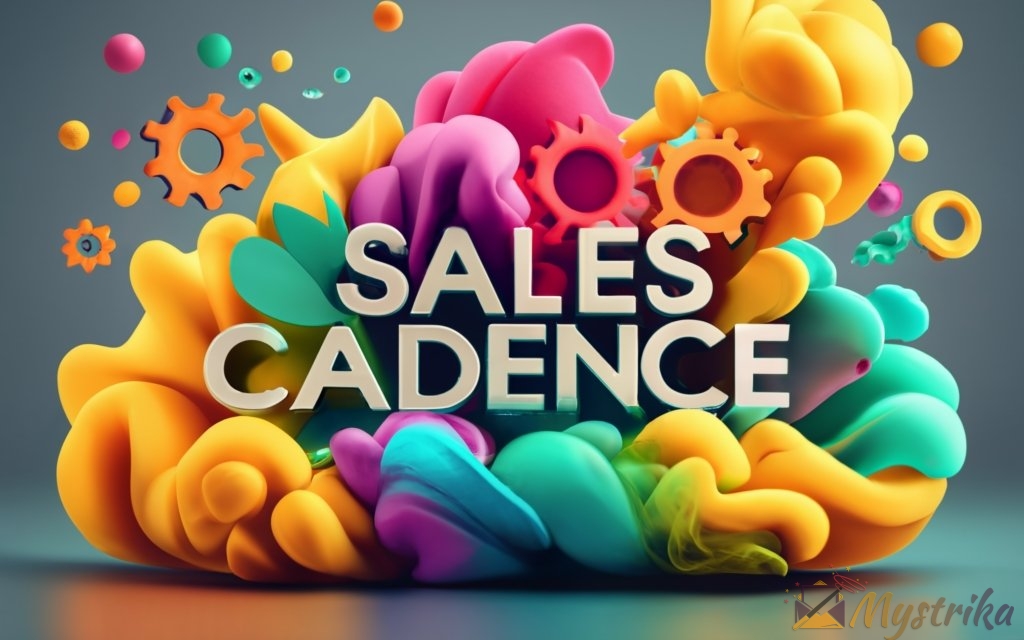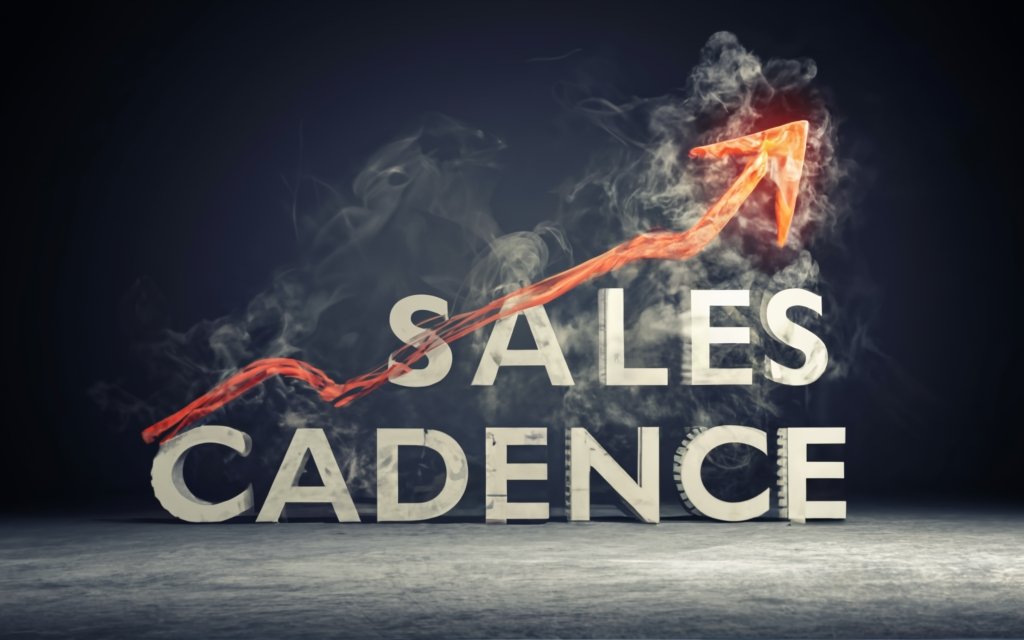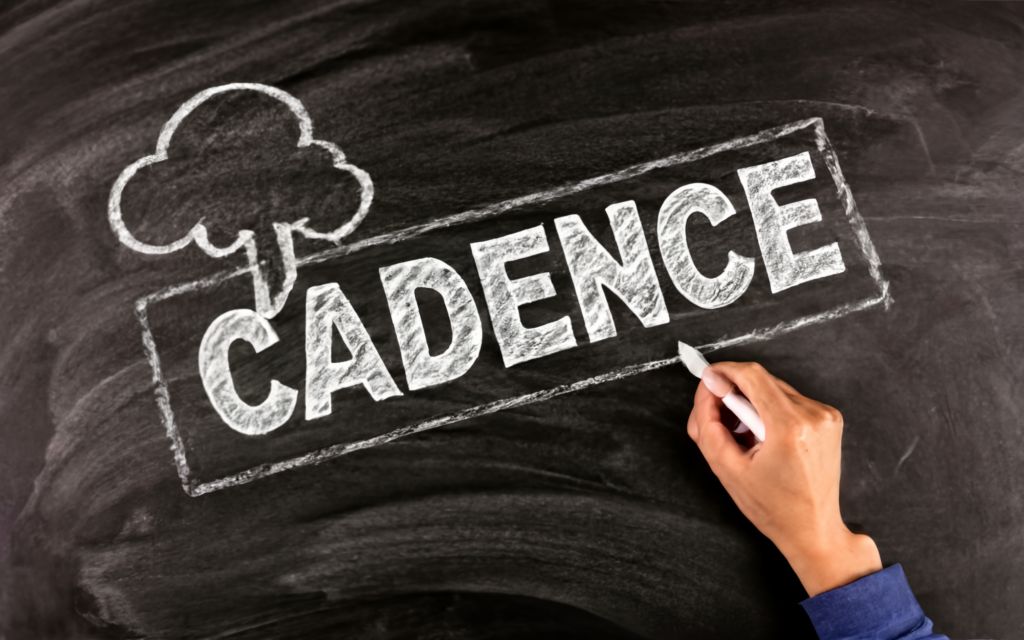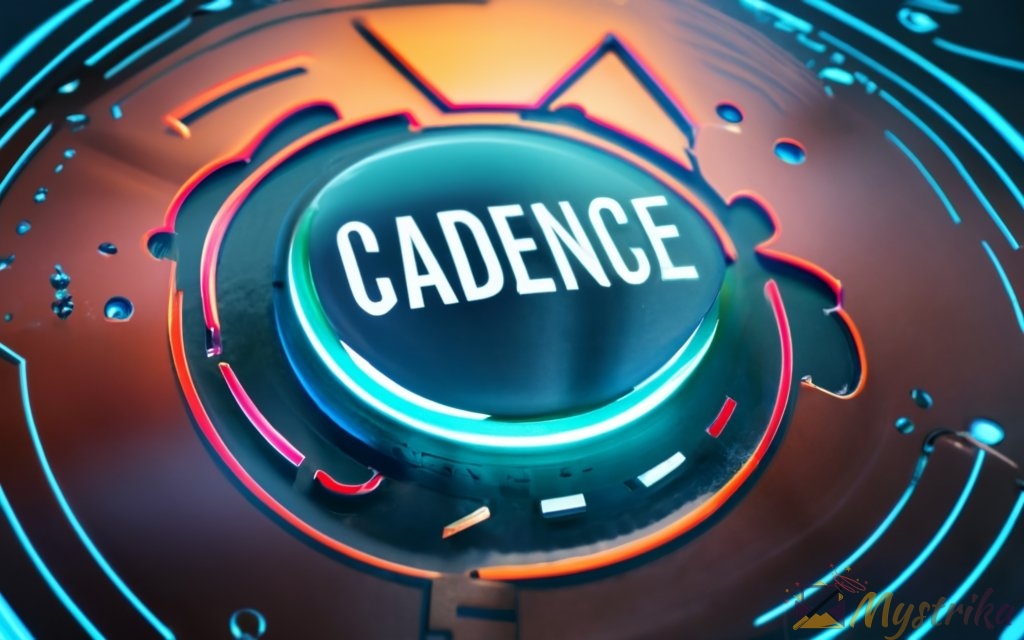From sales follow-ups to marketing emails, cadence is the the rhythm and science of perfectly timed business interactions. Get this intricate dance right, and the results are beautiful. Miss a step, and the music stops. This complete guide breaks down proven cadence strategies for sales, marketing, and social media along with actionable tips to choreograph your customer communications and maximize outcomes. Ready to learn the steps and up your cadence game across channels? Let’s dig in!
What is Cadence and Why Does it Matter?
Cadence refers to the rhythm, sequence, and timing of actions and touchpoints that make up key business functions like sales, marketing, and customer engagement.
Simply put, cadence is all about consistency and optimization of outreach, communication, and messaging across channels over time. By coordinating and systemizing these interactions, companies can dramatically improve results.
Defining Cadence in Business, Sales, and Marketing
In business, cadence often refers to the frequency of communications and interactions with customers and prospects. This includes things like:
- Email newsletters and promotions sent out on a regular schedule
- Social media posts going out on certain days/times
- Sales follow-up calls and emails following a sequence
- Regular check-ins and updates sent to customers
The optimal cadence depends on factors like industry, business model, customer preferences, and goals. But the idea is to find a repeatable pattern that works.
For example, a SaaS company might send weekly product update emails to all users. A real estate agent may call new leads 3 times in the first week after they sign up. And a fashion brand could post on Instagram 2 times per day.
In sales, a sales cadence refers to the sequence and timing of sales activities and touchpoints aimed at converting prospects. This could involve tasks like:
- Initial prospecting call or email
- Follow-up call after sending over a proposal
- Email check-in if no response after a week
- Trial sign-up reminder before expiration
- Invite to webinar about new product features
An effective sales cadence nurtures leads and moves them smoothly through the pipeline. Data shows it takes 6-8 touches to convert a lead, so spacing out communications correctly is key.
For marketing, an email cadence is the frequency and timing of automated email campaigns sent to subscribers and segments. The goal is to:
- Send enough value to keep subscribers engaged
- Not overwhelm inboxes with too many emails
- Trigger emails based on lead behavior and lifecycle stage
Tools like Mailchimp allow marketers to set up cadences with ease and get granular with targeting.
There are also social media cadences focused on organic and paid posting schedules across platforms like Facebook, Instagram, Twitter, and LinkedIn. The aim is to maximize reach and engagement.
The Benefits of Using Cadence Strategically
There are many benefits to implementing intentional cadences across sales, marketing, and customer engagement:
- Increased conversions: Well-timed follow-ups and seamless nurturing via cadences generate more sales. Studies show companies see 2x more conversions by adopting structured cadences.
- Improved efficiency: Cadences minimize guesswork and create consistency. This helps teams scale activities as they grow. Reps can handled doubled workloads without missing steps.
- Better analytics: Along with CRM tracking, cadences allow for easy reporting on the effectiveness of sales and marketing tactics. Managers can see what sequencing works best.
- Personalization: Automated cadences can be tailored based on interests, lead source, lifecycle stage, and more. This delivers a targeted experience.
- Enhanced brand image: Consistent and valuable communication via cadences builds familiarity and trust with prospects and customers.
- Higher ROI: Companies using a metrics-driven, cadence-based approach see much higher returns from their sales and marketing efforts.
How Cadence Improves Results Across Key Business Functions
Using the right cadences has a wide-ranging impact on results:
Sales:
- Higher contact rates: Cadences ensure regular, effective follow-ups so fewer leads slip through the cracks.
- Faster deals: Optimized sequences move prospects seamlessly through sales funnel without stalling.
- More pipeline predictability: Consistent conversion numbers from cadences allow accurate forecasting.
Marketing:
- Increased engagement: Strategic sends based on subscriber preferences improve open and click rates.
- Larger reach: Posting social content on a schedule expands audience and followers.
- Better lead capture: Automated email nourishes subscribers for higher opt-in and conversion rates.
Customer Success:
- Improved retention: Check-ins and education via cadences reduce churn and increase renewals.
- Upsell opportunities: Triggers can detect usage trends and cross-sell to accounts accordingly.
- Deeper satisfaction: Relevant communications enhance overall customer experience and advocacy.
Bottom line – cadences bring structure, personalization, and measurement to key business functions. Combined, this leads to significant gains in efficiency, performance, and ROI across sales, marketing, and customer success.

Best Practices for Creating an Effective Sales Cadence
A sales cadence is a sequenced routine of sales activities and touchpoints aimed at converting prospects. The ideal cadence moves leads smoothly through the pipeline by providing value at each stage.
Well-executed cadences generate more qualified leads, higher contact rates, and faster deals. But how exactly should you go about creating one? Here are some key best practices.
Understanding Your Target Audience and Buyer Personas
The first step is getting crystal clear on your ideal customer profile (ICP). Ask yourself:
- Who is your target audience?
- What are their pain points and goals?
- Where do they congregate online?
- How do they prefer to communicate?
This will shape the foundations of an effective cadence. You need to know your audience inside and out.
Many companies make the mistake of trying to appeal to too many different personas with a broad brush. This results in low relevance and engagement. Figure out your prime ICPs and optimize your outreach for each one.
For example, here are two different ICPs:
Enterprise IT Manager: Responsible for evaluating and purchasing cybersecurity software at Fortune 500 companies. Very busy, on the road a lot. Prefers calls and in-person discussions. Needs educational, consultative selling approach.
SMB Marketing Director: Manages digital marketing and sales strategies for small retail business. Very online and budget-focused. Responds well to personalized email outreach. Needs simple, low-touch options.
As you can see, cadence and touches would vary greatly for these two personas. So do your research and create buyer personas to cater sequencing to.
Choosing the Right Communication Channels and Messages
With your ICPs defined, determine the best channels and messaging to use in your cadence.
Think about where your prospects are digitally and what content resonates. For enterprise IT managers, a LinkedIn connection and InMail may get a good response rate. For SMB marketers, a cold email could be more effective.
According to Salesforce research, here are the top channels used in sales cadences:
- Email – 93%
- Phone calls – 88%
- LinkedIn – 71%
- Direct mail – 34%
Test different options and see what works for each segment. Also tailor your messaging to be highly relevant.
For example, if you know IT managers care about security and compliance, focus on those topics. For SMB marketers, talk about return on investment from marketing tactics.
Crafting the right message for the right channel results in much higher engagement and interest.
Structuring Your Outreach Sequence and Timing
Now it’s time to map out your cadence sequence and timing. This involves defining:
- The series of communication touchpoints
- When each one occurs
- Time between each step
- Number of attempts before stopping
The cadence starts with less intrusive outreach via email before graduating to calls, voicemails, and social touches. This gives prospects time and space to respond before applying more urgent nudges.
Giving 2-4 days between follow-ups allows people time to review and reply. Varying the content keeps things interesting and personalized too.
Personalizing and Customizing Your Sales Cadences
Even with a defined structure, your cadence should flex based on prospect needs and actions. This is where personalization and customization come into play.
Personalized, dynamic messages improve open and response rates. But manual customization for every prospect is time-consuming. This is where CRM and sales automation tools help.
Built-in workflows can automatically:
- Insert prospect first name/company into emails
- Send specific collateral based on interests
- Trigger next steps based on prospect actions
For example, if a prospect downloads a pricing guide, they get added to an automation. This immediately sends them a pricing overview video and calendar invite to discuss further.
Workflows adapt in real-time, saving reps hours of manual labor. 89% of high performing sales teams rely on automation to personalize and scale.
Automating Your Sales Cadence for Consistency
Speaking of automation, CRM and sales tools are invaluable for executing cadences consistently. They provide:
Task Scheduling: Automatically schedule and assign cadence tasks to reps and teams. This prevents anything from slipping through the cracks.
Email Templates: Standard email copy and templates give messaging consistency while allowing for some customization.
CRM Tracking: Activities like calls, emails, forms, and meetings get logged in CRM for insights.
Trigger-Based Actions: As mentioned, certain prospect actions can kick off relevant and timely responses.
Analytics: CRM reporting and analytics provide visibility into how well cadence stages and channels are converting.
Without these elements, running cadences smoothly requires extensive oversight. Automating ensures reps stay on track even as workload increases.
Continuously Testing and Optimizing Your Sales Cadence
Don’t just set and forget your cadence after creating it. To maximize results over time you need to continually test and optimize it.
Here are some ways to improve:
Experiment with timing: Send each email or touchpoint earlier or later and see if it impacts open/response rates.
Test new channels: Try adding direct mail, SMS, or social touches like LinkedIn invites to see if it creates new conversions.
Gather feedback: Ask reps what’s working well or needs adjustment. See if prospects have suggestions too.
Review analytics: Look for patterns in metrics that reveal which touchpoints and communication channels perform best.
Watch for stagnation: If leads keep dropping off at a certain stage, introduce a new element to re-engage them.
Adjust based on results: If Monday emails get 30% more opens than Friday, send more on Mondays. Let data guide optimization.
Conduct A/B testing: Send version A of a sequence to half your prospects and version B to the other half. See which cadence converts more leads.
By continuously monitoring and improving your sales cadence, you’ll boost its ability to nurture prospects and drive deals. Don’t let it remain static.
In summary, well-planned sales cadences pay dividends in the form of more closed sales and pipeline predictability. Follow the steps outlined here, leverage automation, experiment relentlessly, and your cadence will evolve into an unstoppable lead conversion machine.

Integrating Social Media Into Your Sales Cadence
Social media platforms like LinkedIn, Twitter, and Facebook have become indispensable sales tools for researching prospects, connecting with decision-makers, and nurturing relationships.
Integrating social media outreach into your sales cadence is now a must. Prospects expect to be engaged on their channel of choice, with 89% of buyers starting their vendor research on social channels.
Done right, social selling via cadences leads to 207% more sales opportunities. Here are some tips for incorporating social media effectively at every step.
Researching Prospects on Social Channels
The first step is researching your prospects extensively on social media. This enables you to personalize outreach and build better relationships.
Comb through platforms to uncover details like:
- Bio/work information
- Interests and hobbies
- Alma mater
- Photos and updates
These personal insights make it easier to find common ground and make authentic connections.
For example, if you learn a prospect graduated from the University of Michigan, you can mention being a fan of Michigan football when reaching out.
Little personal touches like this boost response rates by making prospects feel understood. Just be sure not to come off as creepy by referencing anything too obscure.
Making Initial Outreach and Connections on Social
Once you’ve researched prospects on social channels, it’s time to make your initial outreach. Social media provides multiple ways to do this effectively:
Social Connection Requests: Send personalized connection requests on LinkedIn and Facebook along with a friendly intro message. Mention common backgrounds, groups, or interests you noticed.
Social Mentions and Tags: Proactively mention or tag the prospect in relevant social posts and discussions where they’ll get notified. This gets their attention.
Direct Messages: Send personalized DMs on Twitter, LinkedIn, or Instagram referencing a post of theirs or opening an engaging dialogue.
Social Network Introductions: Reach out via someone in your network who you are mutually connected with on social platforms. This enables a warm introduction.
Social Lead Ads: Run customized lead gen ads on platforms like LinkedIn and Facebook to appear on their feeds and entice them to convert.
Live Video: Go live or invite prospects to a one-on-one video chat via Instagram, LinkedIn, or Facebook to make an intimate personal connection.
Social channels provide more ways to start conversations and nurture new relationships than cold emails alone. Think beyond connection requests and DMs though. Get creative with social mentions, introductions, interactive content, and video.
Using Social Media for Nurturing and Relationship-Building
As you enter the nurturing stages, continue engaging prospects on social channels to build familiarity and trust.
Leverage your sales cadence for timely, valuable social interactions such as:
- Sharing or commenting on posts relevant to their interests
- Tagging them in industry articles or discussions
- Cross-promoting their content and company updates
- Congratulating them on work milestones and achievements
- Sending personalized video messages and company shoutouts
The goal is to organically cultivate the relationship without overt selling. Provide value and make them feel special.
Tools like Nimble](https://www.nimble.com/) and [EveryoneSocial make it easy to track interactions and remind you to follow-up.
According to Socially Powered, 79% of sales leaders using social selling see larger deal sizes. So leverage it in your cadence.
Engaging Prospects on Social to Drive Conversions
As leads become sales qualified, continue engaging them on social channels to influence and convert.
Here are some sales-focused tactics to sprinkle into your cadence:
Targeted Content Shares: Send prospects links to gated collateral, demo videos, testimonials, and product updates. Pique their interest at key points.
Strategic Hashtag Outreach: Include relevant hashtags in your posts and outreach that prospects follow. This gets your brand on their radar.
Promotional Social Messages: Run special offers, discounts, and giveaways via social messages timed to capitalize on pain points.
Co-branded Social Contests: Work with prospects to co-create contests, quizzes, and sweepstakes to generate excitement. Offer prizes and discount codes.
Live Video Calls and Demos: Schedule one-on-one video demos and calls via LinkedIn, Instagram, and Facebook to deliver personalized pitches.
Retargeted Social Ads: Serve prospects targeted social media ads across channels based on their site behavior to deliver customized offers.
Get prospects engaged with your brand on social channels in the moments that matter most. Then use automation to trigger sales cadence responses and nudges when social activity occurs.
Retaining Customers by Promoting Them on Social
Finally, customer retention starts on day one, so keep engaging and promoting new clients on social media.
There are many creative ways to showcase customers in your content and outreach:
- Spotlight customer wins, events, and news in your posts
- Promote their content, products, and updates
- Feature them in customer testimonial videos
- Write LinkedIn recommendations highlighting successes
- Co-create content like case studies, ebooks, and blog posts
- Give social shoutouts for renewals, milestones, and big deals
- Send personalized appreciation videos on their birthdays or work anniversary
This social promotion makes clients feel highly valued while helping them build authority and expand reach. It’s a win-win.
Just make sure you have their consent before discussing customer details publicly. Formalize this via agreements.
When done right, integrating social media outreach into your sales cadence makes every step more genuine, personal, and high-impact. Take your cadences to the next level by engaging prospects at scale on their preferred platforms.

Creating an Optimized Marketing Email Cadence
Email marketing remains an indispensable channel for nurturing leads, driving conversions, and increasing brand awareness. But only if you send out emails using the right cadence.
Optimizing your marketing email cadence takes work. You need to test different frequencies, personalize content, survey subscribers, analyze data, and continually refine things.
Follow the best practices outlined here and you’ll be able to maximize open rates, clicks, and ROI from email campaigns.
Setting Goals for Your Email Campaigns
As with sales cadences, the first step is getting crystal clear on your goals. Email campaigns should always tie back to concrete business objectives.
Common email marketing goals include:
- Driving traffic to your blog
- Promoting new products
- Nurturing leads towards sales
- Increasing opt-ins and subscriber growth
- Building brand awareness and affinity
The goals you choose will influence the appropriate cadence. For example, a regular newsletter for staying top of mind can be sent weekly or monthly.
But for promoting a time-sensitive offer like a flash sale, you need a much faster cadence over a few days leading up to the deadline.
Define your goals upfront so you can tailor cadence frequency, timing, content, and calls-to-action accordingly.
Segmenting Your Email Lists for Targeted Cadences
One of the biggest mistakes companies make is taking a one-size-fits-all approach to email cadence.
The ideal frequency will vary subscriber to subscriber based on interests, lead stage, past engagement, and more.
That’s why you should leverage email list segmentation to group together recipients with similar behaviors and attributes. This allows you to customize cadence for each group.
For example, you may create segments like:
- New subscribers – High send frequency to onboard and educate
- Engaged subscribers – Moderate frequency with promotions and updates
- Subscriber VIPs – Special offers and access sent monthly or quarterly
- Inactive subscribers – Send re-engagement campaigns every 2-3 weeks
Take the time to segment thoroughly and then determine the ideal cadence and messaging for each segment. This targeted approach results in up to 700% higher email revenue.
Finding the Right Email Frequency for Each Segment
Next comes the challenging but crucial part – finding the perfect send frequency for each subscriber segment.
Overdo it and subscribers will feel annoyed. Underdo it and you’ll miss opportunities for engagement.
While there are no hard rules on email frequency, our analysis revealed some best practices:
- 2-5 emails per week tends to be the sweet spot for most businesses
- Open rates steadily decline as send frequency increases
- Click-through rates remain relatively stable regardless of frequency
- Branding emails can be sent monthly or less frequently
- Promotional emails often require higher frequencies
So start by looking at industry email marketing benchmarks. Then test frequencies to see what works best for each of your segments.
For example, you may find highly engaged subscribers happily open 5 emails per week from you. But new subscribers need just 2-3 emails to start in order to not become overwhelmed.
Monitor open and click rates, conversion metrics, and unsubscribe numbers to dial in ideal frequencies over time.
Personalizing Email Content Based on Buyer Stage
Beyond list segmentation, further personalize email content based on the subscriber’s buyer journey stage.
Where someone is within the awareness > consideration > decision phases will determine what information they need.
For example:
Awareness Stage: Send broad educational content to provide value upfront and build trust
Consideration Stage: Nurture leads by delivering targeted content like case studies based on indicated interests
Decision Stage: Share product updates, demos, and limited-time offers to motivate desired actions
Ideally, your email marketing software will automatically pull in behavioral data like page visits to trigger relevant content for each recipient.
Just make sure content aligns to their stage. Sending promotional content too soon disengages subscribers. Get personalization right by understanding context.
Giving Subscribers Control Over Email Frequency
One of the best ways to optimize cadence is to give subscribers control over their preferred frequency.
Let them select how often they want to receive emails when they sign-up or allow them to update frequency via preference centers.
Giving this flexibility prevents people from unsubscribing altogether if you overdo it. They can simply choose to receive fewer emails when needed.
Preference centers also allow subscribers to indicate interests so you can further filter content.
Empower subscribers to select their cadence and interests for the most personalized, engaging experience.
Surveying Subscribers About Desired Email Frequency
Sometimes the most direct approach is best. Simply survey subscribers about their ideal email frequency.
Email surveys allow you to gather direct input from recipients on how often they want to hear from you. You can ask things like:
- Are you satisfied with the current frequency of our emails?
- Would you prefer to receive more or fewer emails from us per week/month?
- What types of content would you like to see more of in our emails?
This feedback will prove invaluable as you shape your cadences. Listen to what subscribers say they want and adapt accordingly.
A/B Testing Different Frequencies and Content Types
Take the guesswork out of finding the best performing email cadence by A/B testing frequencies and content.
Some ideas for tests:
- Group A gets 2 emails/week, Group B gets 4 emails/week
- Group A gets emails at 8am, Group B gets them at 4pm
- Group A gets emailed Mon/Weds, Group B gets Tues/Thurs
- Group A gets content emails, Group B gets promotional
- Group A gets email surveys, Group B gets educational content
Then compare open rates, CTRs, unsubscribes, and conversions across groups to gain insights.
Cut your optimization time significantly by letting the data point you to the ideal content types, timing, and frequency for each subscriber segment.
Monitoring Analytics to Continually Refine Your Cadence
Optimization never stops. Continuously monitor campaign analytics to find new ways to refine your email cadences.
Look for trends and patterns in key metrics like:
- Open and click-through rates
- Bounce and unsubscribe rates
- conversions from emails
- engagement by time/day
Then tweak your follow-up sequences, personalization, and timings based on what the data reveals.
For example, if Tuesdays have 30% higher click rates than Fridays, send more content emails on Tuesdays and promotional ones on Fridays.
Let data guide better audience targeting, timing, send frequency, and content decisions.
Also track engagement at an individual level. If someone isn’t opening for 2 months, reduce their frequency or remove them from certain segments.
Use analytics to keep refining your cadences. Optimization is a habitual process, not a one-time effort.
In summary, dialing in your email cadence and continually optimizing it takes work. But it pays off in the form of higher deliverability, open rates, subscriber growth, and ROI from your email campaigns. Follow the steps here and you’ll be well on your way.

Using Multi-Channel Cadences for Complete Buyer Coverage
Gone are the days when email or calls were the only outreach channels. Today’s buyers expect omni-channel experiences.
That’s why modern cadences need to incorporate prospecting, nurturing, and conversions across multiple digital platforms.
Doing this effectively takes coordination, personalization, and automation. But the impact on results is substantial.
Omnichannel Prospecting Across Multiple Platforms
Start by casting a wide net during prospecting by leveraging:
- Social media
- Calls
- Direct mail
- SMS
- Chatbots
This allows you to engage prospects on their preferred channel. Begin with less intrusive outreach via email and social and graduate to calls and texts over time.
Multi-channel prospecting also boosts contact rates. Prospects who don’t respond to an email may reply to a LinkedIn message.
Just be sure to track all interactions in your CRM to avoid duplicated efforts.
Consistent Nurturing via Automated Multi-Channel Workflows
Once prospects are engaged, continue nurturing them via multi-channel workflows.
For example, when someone downloads a gated asset, they could receive:
- Email: Thank you email with content recommendations
- LinkedIn: Message from sales rep to schedule call
- Text: Invite to upcoming webinar
- Facebook: Retargeted ad for related asset
This sequencing provides an integrated experience across channels. Automation activates the right follow-ups based on prospect actions and cadence stage.
According to Salesforce, companies that nurture leads with personalized content across channels enjoy over 20% more sales opportunities.
So don’t limit yourself to just email. Orchestrate workflow across multiple touchpoints.
Driving Conversions with Personalized Multi-Channel Journeys
As leads become sales qualified, bring channels together into personalized conversion journeys.
For example, a prospect could experience:
Email: Promotion with link to book product demo
Text: Reminder day before scheduled demo
LinkedIn: Rep shares related case study
Call: Sales rep confirms demo and answers questions
Demo: Highly personalized guided tour of product
Email: Follow-up summarizing key benefits relevant to prospect
When you deliver synchronized, tailored experiences, you guide buyers along the path to conversion.
According to Aberdeen, 73% of companies using personalization across channels saw larger deals and a 10%+ increase in annual contract value.
Don’t just view channels in isolation. Orchestrate them together to reflect the real buyer journey.
The future of cadences is cross-channel by design. Meet buyers where they are by blending physical and digital interactions into seamless sequences. Take the guesswork out of multi-channel execution using workflow automation. The result will be more prospects contacted, nurtured leads, and closed deals.
Key Takeaways and Next Steps
Implementing strategic cadences across your sales, marketing, and social channels is a process. But doing it right delivers results. Here are some final takeaways and next steps to put you on the path to cadence success.
Summary of Best Practices for Sales, Marketing, and Social Cadences
Sales Cadences:
- Understand your ICPs and tailor messaging accordingly
- Map out detailed follow-up sequences with ideal timing
- Personalize outreach while automating for consistency
- Continuously optimize your sales cadence based on data
Email Cadences:
- Set data-driven goals for each email campaign
- Segment your lists and find the ideal frequency per group
- Give subscribers control over their preferences
- Personalize content based on subscriber stage
- Analyze metrics like open rates to refine your approach
Social Media Cadences:
- Research prospects extensively on social platforms first
- Make initial connections with personalized invites and messages
- Maintain nurturing relationships via consistent value-adds
- Strategically promote content and offers to generate conversions
- Spotlight clients on social media to improve retention
Multi-Channel Cadences:
- Orchestrate prospecting across email, social, SMS, calls, chat, and direct mail
- Automate workflows to nurture subscribers based on their actions
- Craft personalized cross-channel journeys to convert sales qualified leads
Software Tools to Help Implement Your Cadence Strategy
While you can run basic cadences manually, marketing automation and CRM software take execution to the next level. Here are some top tools:
CRM Software
- HubSpot CRM
- Salesforce
- Zoho
- Pipedrive
- Insightly
CRM solutions provide workflow builders, email templates, task automation, and campaign tracking to streamline cadence management.
Email Marketing Software
- Mailchimp
- Constant Contact
- ConvertKit
- GetResponse
- Drip
Top email tools make it easy to set up, automate, and test cadences to find your ideal sending frequency.
Social Media Management Software
- Hootsuite
- Sprout Social
- AgoraPulse
- Sendible
- eClincher
These solutions streamline social publishing, monitoring, analytics, and engagement – great for managing social cadences.
Sales Engagement Software
- Outreach
- SalesLoft
- Groove
- Mixmax
- Woodpecker
Top sales tools provide automation for outbound sequences, templates, and reporting to execute cadences at scale.
Continuously Experimenting and Optimizing for Ongoing Improvement
Getting your cadence right isn’t a one-and-done effort. To maximize results over time you need to continually experiment and refine things.
Here are some key ways to keep optimizing your cadences:
- Test new channels, messaging, content types, and outreach strategies
- Gather direct feedback from prospects and customers
- Review analytics frequently and tweak underperforming elements
- Run A/B tests to compare results from cadence variations
- Monitor individual engagement to adapt personalized cadences
- Keep streamlining sequences and touchpoints
- Use technology like AI to enhance automation and workflows
- Share results and collaborate with sales, marketing, and social teams
- Don’t fear shaking up your cadence approach as buyer behaviors evolve
Adopt an agile, growth mindset. View cadence optimization as an ongoing journey rather than a destination. Leverage tools, technology, and analytics to continually refine your playbooks.
In closing, implementing strategic cadences across business functions delivers tremendous upside. As covered throughout this guide, taking a coordinated, metrics-driven approach to sales, marketing, and social outreach unlocks new levels of efficiency, personalization, and results. Use the frameworks, best practices, and software outlined here to begin elevating your cadences today.

Key Takeaways
Optimizing your cadence across sales, marketing, and social channels is crucial for modern business success. Here are some of the main takeaways:
- Cadence provides rhythm and consistency to customer interactions across channels over time.
- Well-executed cadences deliver higher conversion rates, larger deals, and increased efficiency.
- Tailor sales cadences by ICP and automate for consistency using CRM software.
- Send marketing emails using segmented frequencies based on subscriber preferences.
- Integrate social media into cadences for enhanced personalization and reach.
- Adopt multi-channel workflows to reflect the cross-platform buyer journey.
- Continuously experiment with cadence variations using A/B testing and data.
- Use technology like marketing automation and AI to scale cadences effectively.
- Always gather direct customer feedback to improve cadence alignment.
- Refine constantly based on results – optimization is an ongoing process.
Implementing strategic, metrics-driven cadences across sales, marketing and social functions is a key recipe for business success. Use the tips in this guide to start optimizing your cadence approach today.
Frequently Asked Questions
What is cadence in sales?
A sales cadence is the pre-defined sequence of sales activities and touchpoints, usually involving multiple communication channels, aimed at converting prospects into customers.
What is an email cadence?
An email cadence is the strategic sending of marketing emails to subscribers and segments using specific frequencies and schedules optimized for open rates, click-throughs and conversions.
How often should you send sales emails?
Most sales teams send emails 2-5 times over a 1-2 week period as part of an outbound sales cadence before stopping. Email frequency should be based on buyer persona preferences.
What is the best day to send marketing emails?
Tuesdays, Wednesdays and Thursdays tend to see the highest marketing email open rates, with Tuesdays generally performing best. Avoid weekends as engagement is lower.
How do you create an effective sales cadence?
Key steps include researching your audience, mapping the sequencing and timing of touches, personalizing messaging, automating workflows, continually experimenting, and using data to optimize the process.
What should you include in a sales cadence?
Typical sales cadence components are emails, phone calls, voicemails, LinkedIn connections and outreach, chat messages, text/SMS messages, direct mail, and lead nurturing content.
How do you build an email marketing cadence?
Best practices for optimizing an email cadence include segmenting subscribers, finding the ideal frequency for each group, personalizing content, surveying customers, A/B testing, and monitoring metrics like open and click-through rates.
How do you integrate social media into a sales cadence?
Social can be leveraged for lead research, warm outreach, relationship nurturing, promoting content, and retaining customers through promotions and spotlights.
How long should a sales cadence be?
The length of a sales cadence varies by deal size, industry, and buyer preferences. B2B cadences often last 2-3 weeks but can be shorter or longer depending on the prospect’s responsiveness.

